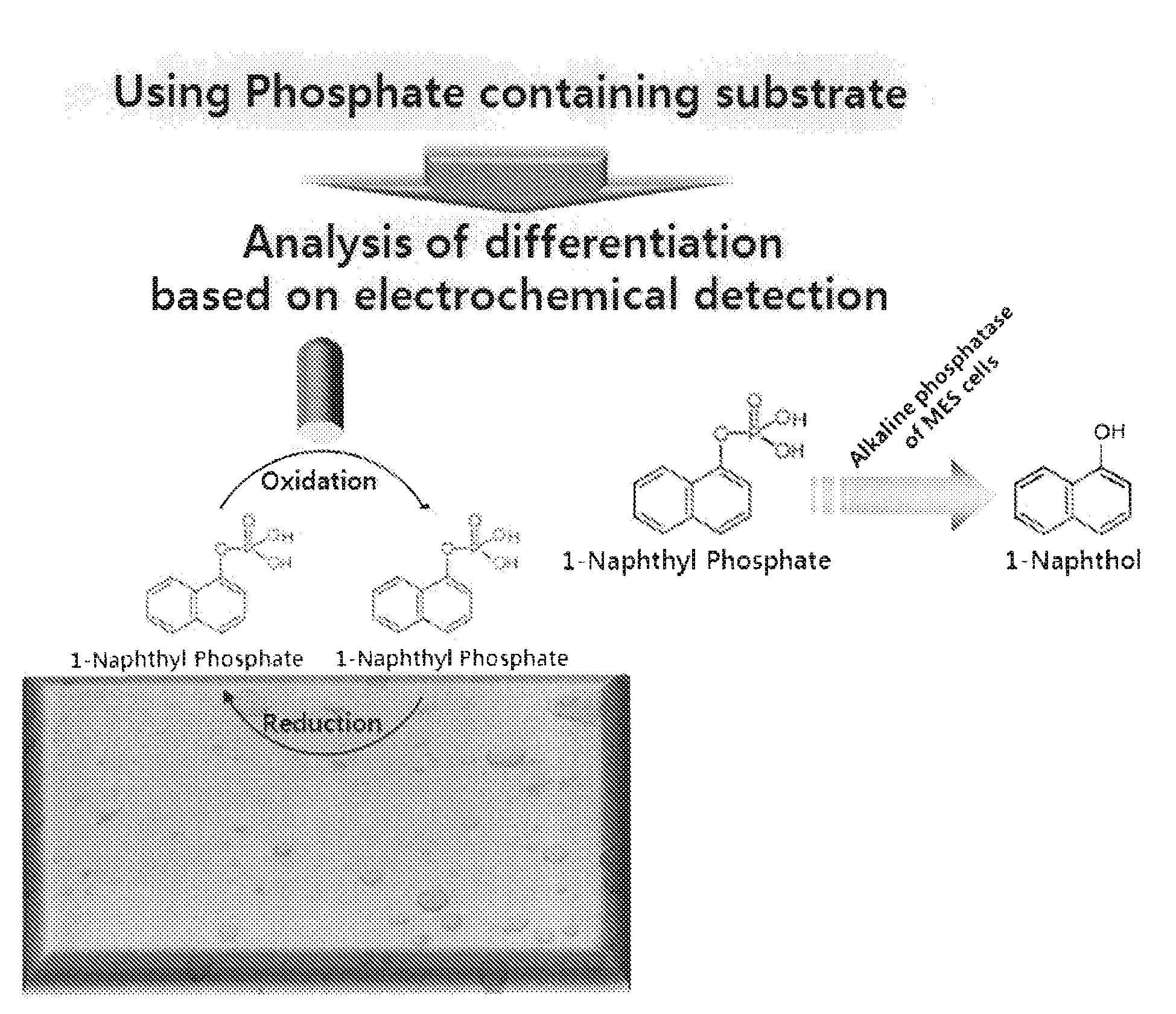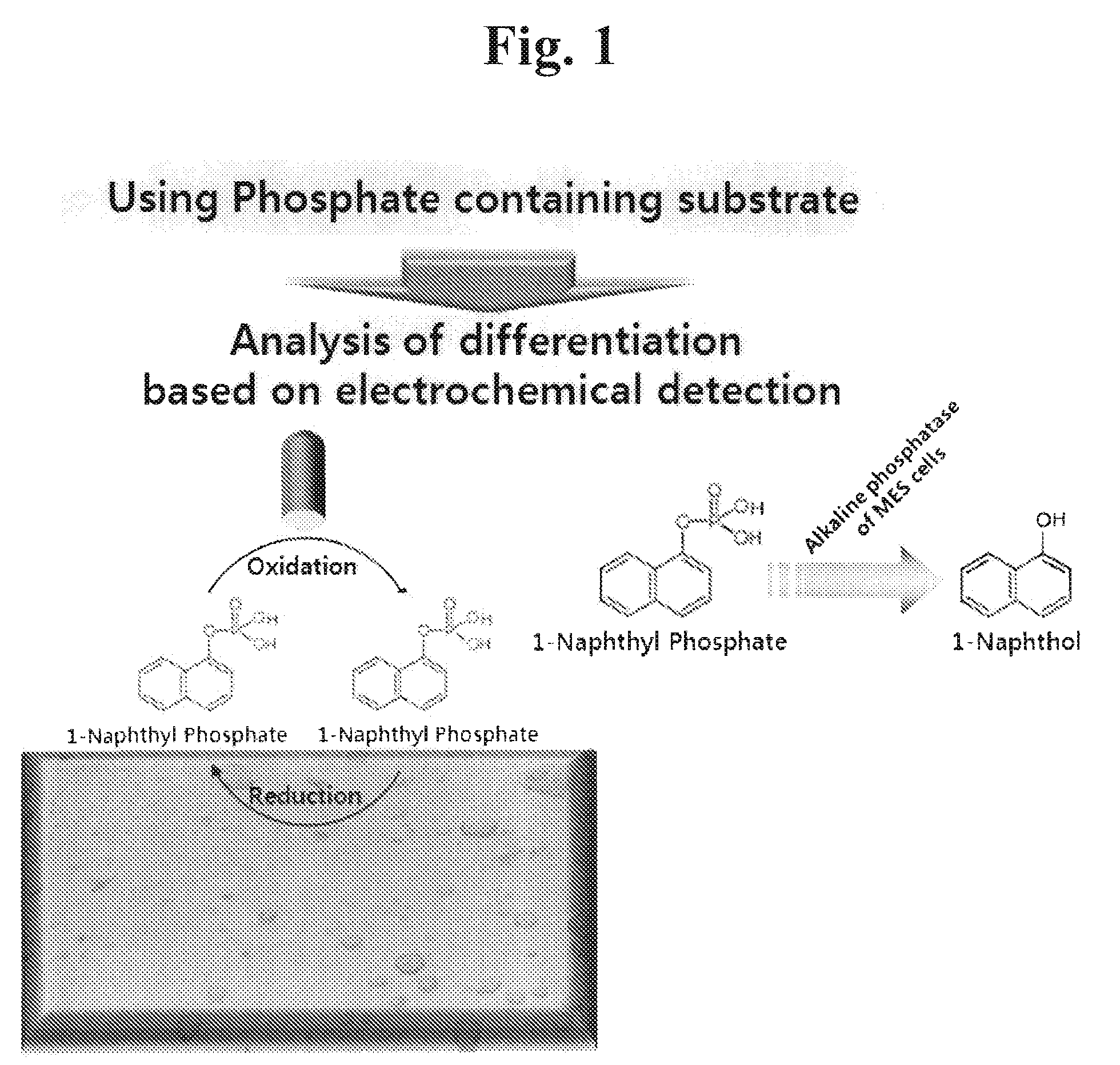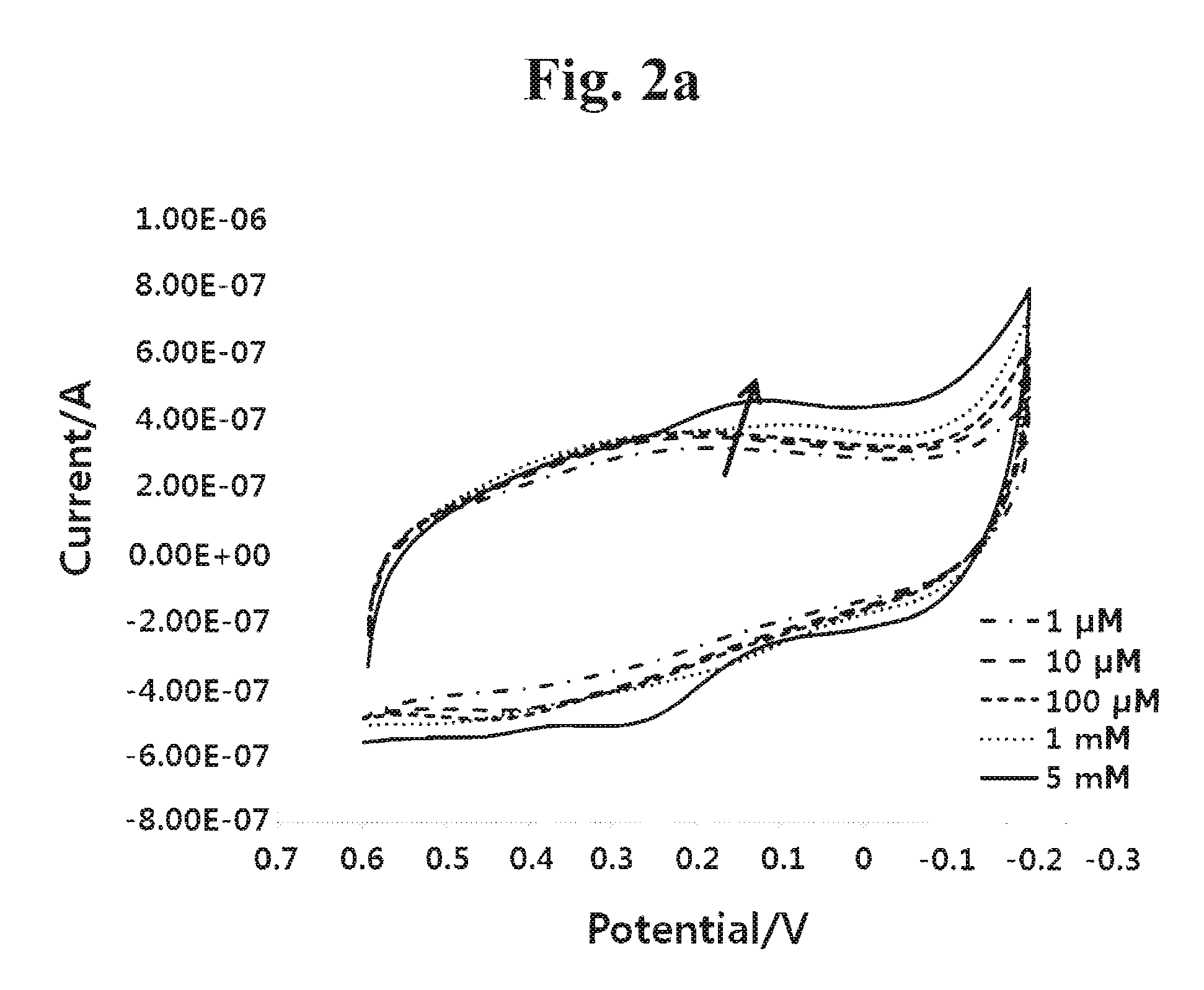Sensor for detecting stem cell differentiation based on electrochemical methods
a technology of electrochemical methods and sensors, applied in the field of sensors for detecting stem cell differentiation, can solve the problems of not using electrical or electrochemical systems to detect the differentiation of mes cells, and the size of the optical system is limited
- Summary
- Abstract
- Description
- Claims
- Application Information
AI Technical Summary
Problems solved by technology
Method used
Image
Examples
examples
Experimental Materials and Methods
2.1 Materials
[0046]1-Naphthyl phosphate and phosphate buffered saline (PBS) (pH 7.4, 10 mM) solution was purchased from Sigma-Aldrich. All other chemicals that are used in this study were obtained commercially as reagent grade.
2.2 Undifferentiated MES Cell Culture and Embryonic Body Formation
[0047]J1 cells, mouse embryonic stem (ES) cells, were cultured in Dulbecco's modified Eagle's medium (DMEM) supplemented with 15% FBS, 1 mM sodium pyruvate, 10−4M 2-mercaptoethanol, 1×nonessential amino acids, and 1,000 U of leukemia inhibitory factor (LIF) per ml at 37° C. and 5% CO2. EB formation was performed with J1 ES cells as previously described [13]. ES cells (2×106 cells) were seeded onto the bacterial-grade Petri dishes in DMEM containing 10% FBS without LIF. After 2 days of suspension culture, EBs were collected and trypsinized. A total of 1.37×106 cells were replated on 0.2% gelatin-coated 6-well plates containing the same medium. The number of cells...
PUM
| Property | Measurement | Unit |
|---|---|---|
| temperature | aaaaa | aaaaa |
| pH | aaaaa | aaaaa |
| pH | aaaaa | aaaaa |
Abstract
Description
Claims
Application Information
 Login to View More
Login to View More - R&D
- Intellectual Property
- Life Sciences
- Materials
- Tech Scout
- Unparalleled Data Quality
- Higher Quality Content
- 60% Fewer Hallucinations
Browse by: Latest US Patents, China's latest patents, Technical Efficacy Thesaurus, Application Domain, Technology Topic, Popular Technical Reports.
© 2025 PatSnap. All rights reserved.Legal|Privacy policy|Modern Slavery Act Transparency Statement|Sitemap|About US| Contact US: help@patsnap.com



